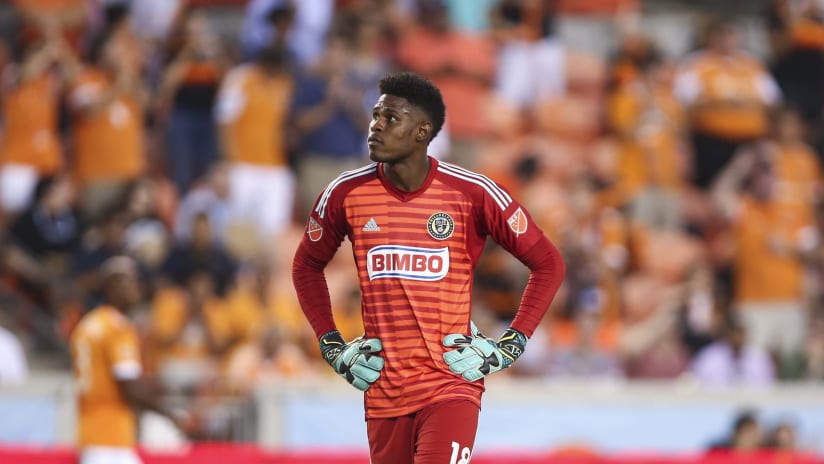Amid a season of struggles, departures, and the subtle identity changes that come with trying to forge a winning culture, the Philadelphia Union have one thing this season the Portland Timbers would have wanted: a place in the U.S. Open Cup semifinals.
Jim Curtin’s team earned that place thanks to wins over the Richmond Kickers of the USL, New York Red Bulls and Orlando City SC – a run that’s seen the Union put up eight goals while only conceding once in the annual knockout competition. Now, ahead of their final-four meeting with the Chicago Fire on Wednesday, Philadelphia is two games – the first of which will be at home – from claiming the first major honor in club history. What a time to be alive.
That time (or, at least, our description of it) might lend you to believe that a new, high-flying Union are set to arrive Saturday at Providence Park (8pm PT, FOX 12 PLUS); that the pedestrian teams which have visited before are now a figment of a forgotten time; that a new dawn of Philadelphia soccer is about to shine over Goose Hollow.
Well, not exactly. The Union are only one point out of a playoff spot in the Eastern Conference, and in players like goalkeeper Andre Blake (picture, above) and attacking midfielder Borek Dockal, they have some truly enviable talents. But the overall state of the squad isn’t so dissimilar to the teams Philadelphia’s assembled before – ones that have finished above sixth in the East only once in team history, and not since 2011.
In terms of attacking threat, only two teams (Seattle and Colorado) have scored fewer goals this year than the Union. Neither high-profile acquisition David Accam nor returning U.S. international C.J. Sapong have been able to meet expectations, and after combining for 30 goals last season (Accam collecting his in Chicago), the pair have only scored four times in 2018. Both have lost their grips on starting spots.
In terms of defense, the Union are in a better place, sitting in the middle of the MLS pack despite starting two 19-year-olds (Mark McKenzie, Auston Trusty) in central defense. The bigger picture, though, fits into the overall narrative of the franchise’s time in MLS. Have they been terrible? Not entirely. Good? Not yet. The age of the players in the squad suggest there are better days to come, but nearly a decade into the Union saga, when are those better days going to come? Because through the days of hope that have accompanied the Danny Mwangas of the world – the Jack McInerney-, Amobi Okugo-, Farfan brothers- and Sheanon Williams-esque prospects that have come and gone – those better days have never shown.
Now, in the wake of former sporting director Earnie Stewart’s departure for U.S. Soccer, that cyclical, enduring reality compels a question: Did the Union break their pattern during the former U.S. international’s time in charge? Well, clearly not, so the question is probably better phrased another way: Will the seeds Stewart planted during his three years in charge lift Philadelphia from their rut?
The U.S. Open Cup run provides a bit of positive evidence; then again, it’s only three games, and the Union have been here before. An just as they did in 2012, when the team reached the Open Cup’s final four, this year’s team rests on the edge of the playoff race, looking neither terrible nor imposing. It was McInerney, then, and Okugo with the Farfans. Now, it’s Trusty, McKenzie, and players like attacker Maurice Epps. There’s still reason to think the Union can get better. There’s also reason to think nothing has changed.
Saturday at Providence Park, Portland should get a good view of the Union’s depth, which means players like Sapong, Accam, defender Jack Elliott and others displaced from Curtin’s XI could use the Timbers as a springboard back into the lineup. The U.S. Open Cup semifinal will be only four days away, and with a game on turf and another cross-country flight between kickoffs, Curtin has to prioritize his tournaments. Maybe players like Haris Medunjanin and Alejandro Bedoya will get time in Portland, but it’s also possible the Union will start a mostly second-choice squad.
In both cases, Portland should be favored to take full points, but as has been the case every time Philadelphia’s visited Oregon, the Union will have enough threats, enough athletes, and a high enough baseline to cause problems. When that baseline even gets higher than “cause [a team] problems” is the tension defining the Union’s existence.












